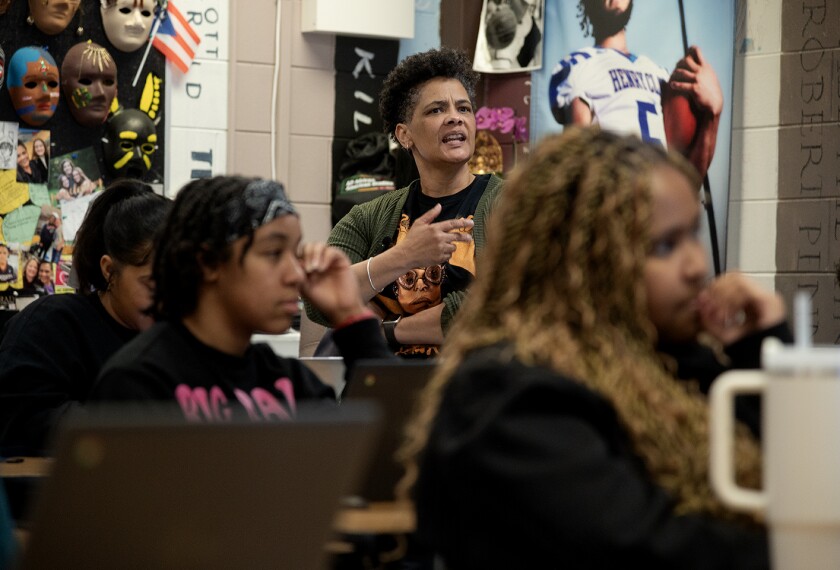The need for media literacy education is becoming increasingly important, according to advocates, as students are bombarded daily with questionable information on social media and other media platforms.
In 2022, New Jersey enacted a law that requires public K-12 schools to teach media literacy skills to all kindergarten through 12th grade students. Seventeen other states have some form of media literacy instruction written in their K-12 standards or curriculum, according to , a nonprofit advocacy group.
When planning ways to incorporate media literacy education into a curriculum, experts say that it’s important to leverage the expertise of school librarians or media specialists.
But debates over school library books have thrust libraries and librarians into the political spotlight. And more than 5 million students attend schools without a librarian, according to an analysis of federal data. So how can librarians implement media literacy instruction in their school or district?
In a SXSW EDU meet up hosted by the National Association for Media Literacy Education (NAMLE), school librarians shared their challenges and what resources they need to implement media literacy instruction:
1. More funding
At the end of the day, many of the challenges schools, librarians, and media literacy experts face could be solved with more funding.
Kara Thorstenson, the director of digital learning and libraries for Chicago Public Schools, said that in an ideal world, what she needs to scale media literacy education in her district is “tons of cash.” Other librarians agreed.
In order to have better resources, such as more in-depth curricula or lesson plans, more professional development, and more librarians, K-12 districts need funding set aside specifically for those purposes. In Chicago, they used some ESSER and other local funding to expand media literacy education, which is mandated for Illinois high school students but not funded by the state. Thorstenson said it would be great to have more sustainable funding, because ESSER funds will run out eventually.
2. Better, more in-depth legislation
Having statewide requirements to teach some form of media literacy would ensure that it’s prioritized by K-12 districts, according to the librarians in attendance. It would be great if those laws also codified the status of school librarians as experts in media literacy so that school leaders leverage those resources and spend money to ensure there are librarians in every school.
3. More aligned standards
Donnell Probst, the deputy director of NAMLE, mentioned that there aren’t any national standards on media literacy, yet. So what’s needed is for all of the different local, state, and national library associations to come together to create unified standards that can be used nationwide. But these standards also need to be malleable because the ways students receive information change so quickly, librarians said.
4. More support from ���Ķ���vlog, parents, and the community
Buy-in from classroom teachers, school administrators, parents, and the community ensures better media literacy instruction, Probst said. School librarians need classroom teachers’ expertise because they know their students best, but classroom teachers also need to collaborate with librarians to figure out how to best integrate media literacy into their lesson plans, according to the librarians at the meet up.






